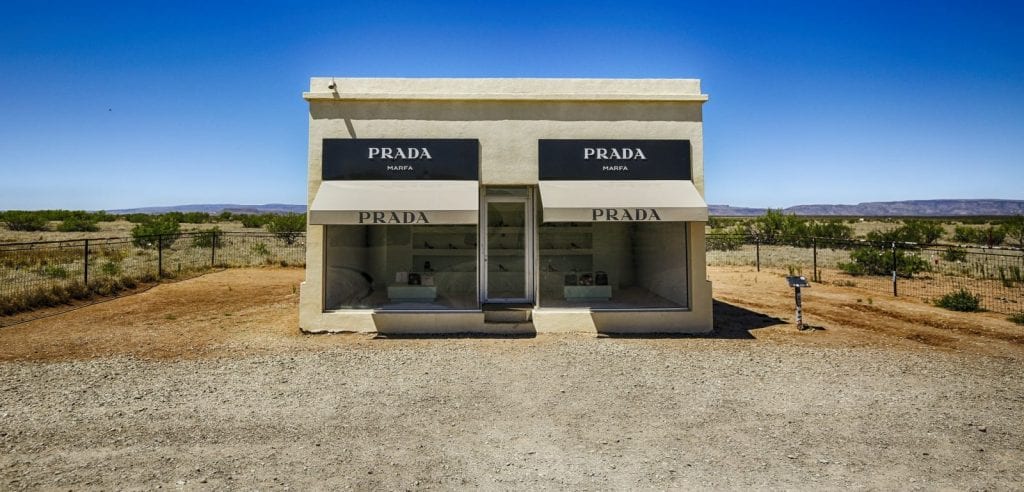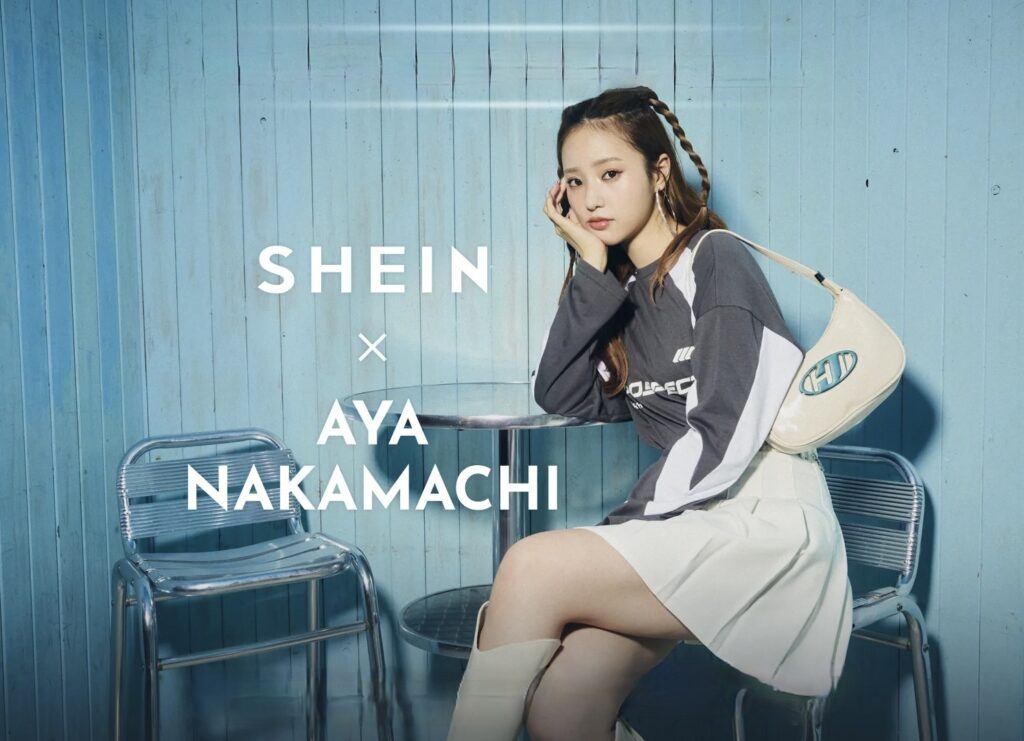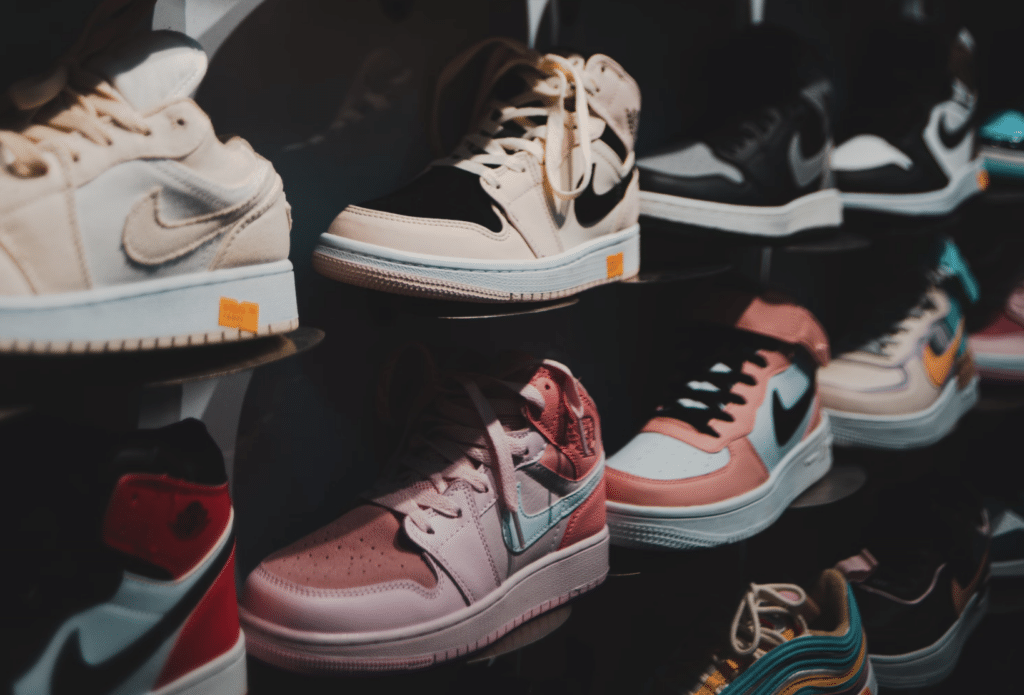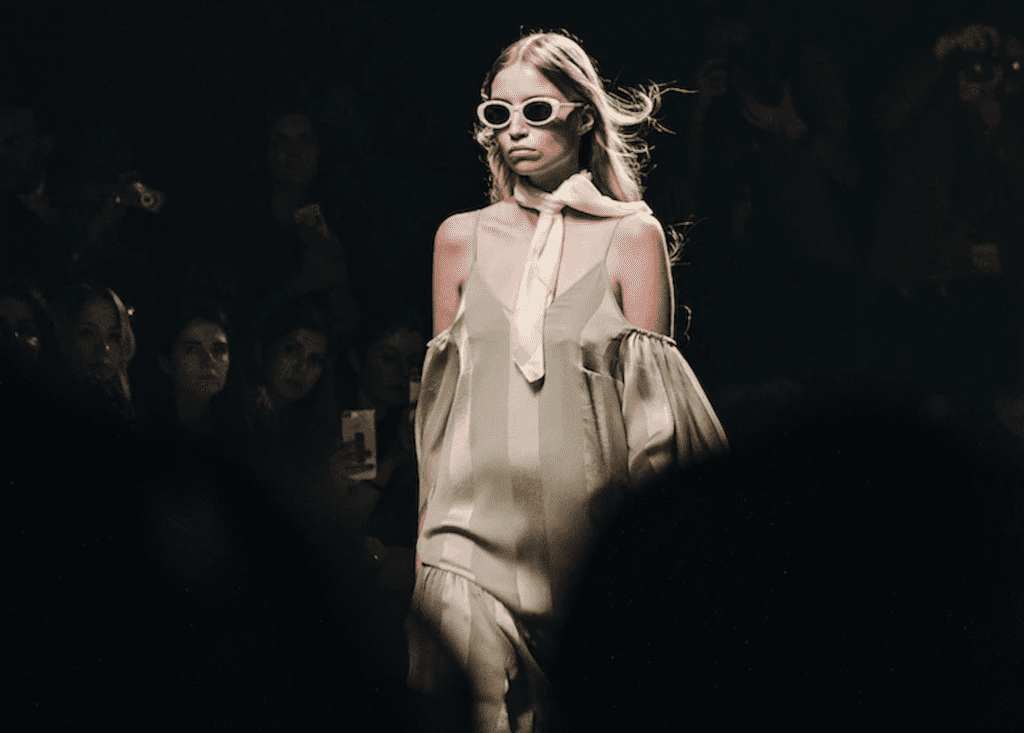About 30 minutes outside of Marfa, Texas (population 1,900) is Prada Marfa – a small adobe brick-constructed structure meant to look like a Prada store. Designed by Berlin-based artists Michael Elmgreen and Ingar Dragset, the small space, which measures out at a mere 15 feet by 25 feet, was constructed in 2005 and designed to resemble a Prada store, right down to the Fall/Winter 2005 collection shoes that are on display inside. The strappy sandals, metallic pumps, and ankle-grazing boots that line shelves on the rear wall, and the top-handled patent leather bags that are perched on two tables near the front windows were selected and provided by Miuccia Prada, the creative director of the cult-favored Italian design house.
Mrs. Prada also permitted Elmgreen and Dragset to use the Milan-based brand’s intellectual property, namely, a stylized rendering of its name – a registered trademark for use in connection with retail services – for the “store” but is, otherwise, unaffiliated with the project and did not fund it. In fact, the $80,000 Prada Marfa project was funded by New York-based non-profit organization, Art Production Fund, in collaboration with Ballroom Marfa, a Texas-based non-profit.
In the twelve years since its was built, Prada Marfa – which is technically located in Valentine, Texas, on a rural stretch of highway just off U.S. Highway 90, a little more than 25 miles northwest of the city of Marfa that is uninhabited by any other nearby structures – has never been opened and will reportedly never be repaired (save for some restorations that have taken place following significant acts of vandalism), allowing it to slowly degrade back into the natural landscape. That is the point of the installation.
Speaking of the creation of Prada Marfa, which has become something of a “must visit” spot for road trippers in and around Texas, Elmgreen has said he and his partner did not anticipate that it would be the subject of such fan fury: “No one was there for the opening … There were just some ranchers that were there and five friends from New York!” Since then, it has welcomed guests that range from Beyoncé and her sister Solange to no shortage of fashion indursty influencers and editors, as well as a number of unnamed brands that have wanted to use it as a background for ad campaigns, something the Elmgreen and Dragset do not permit.
As for why Elmgreen and Dragset decided to set up shop in the middle of the desert in Texas, Elmgreen said the impetus was simple: “It was something we came up with because we thought, ‘How would these shops for luxury goods actually look if they were taken out of their normal context, being in Mayfair, or Paris, or Milano. How would they look if you totally isolate them – almost like a U.F.O. dumped down in the middle of nowhere?’” Prada Marfa is the result.
The Legality of Prada Marfa
Despite its enduring fame, it was not all that long ago that the fate of Prada Marfa was in question. The fight over Prada Marfa started in September 2013 when the faux store/permanent installation was classified by the Texas Department of Transportation as an “illegal outdoor advertising sign.” Following a probe, the Department of Transportation determined that Prada logo on the “store” was in violation of the 1965 Highway Beautification Act, which prohibits advertising on unlicensed land bordering federal highway U.S. 90 and requires advertisers to have a permit.
Elmgreen and Dragset never obtained a permit, saying at the time of its debut that they “reject the idea that their installation is an advertisement.” They elaborated, saying: “There’s a difference between being commissioned by a company to do something for them and using their logo, and using their logo on your own.” Their lack of proper paperwork trust the little structure into an art-versus-advertising debate that was already underway in Marfa. As it turns out, just months before Elmgreen and Dragset unveiled their Prada-centric work, Playboy Enterprises had planted its own installation on the same highway, just a mile northwest of Marfa.
The Playboy piece consisted of a 1972 Dodge Charger placed atop a large box in front situated next to forty-foot neon Playboy bunny sign. Designed by artist Richard Phillips for Playboy, and paid for by Playboy, the installation caught the attention of the Texas Department of Transportation. Despite push back from Playboy as to the status of the sign, the Texas Department of Transportation found that the signage fell neatly within their definition of an advertisement. The “TxDoT regulations define an ‘Outdoor advertising sign’ as ‘an outdoor sign, display, light, device, figure, painting, message, plaque, placard, poster, billboard, logo or symbol, or other thing which is designed, intended, or used to advertise or inform, if any part of the advertising or information contents is visible from the main-traveled way of a regulated highway.’”
“We know it’s illegal. They don’t have licences, they don’t have permits,” Department of Transportation spokeswoman Veronica Beyer said in June 2013. With that in mind, the Department of Transportation ultimately ordered Playboy to remove the 40-foot neon sign, and give the Beverly Hills-based global media and lifestyle company a month to disassemble it.
Elmgreen and Dragset were dealt a more favorable hand. After nearly a year of deliberations between Ballroom Marfa, the Texas-based non-profit art organization that oversees Prada Marfa, and the Texas Department of Transportation, Ballroom Marfa obtained a lease for the privately-owned roadside land, allowing the site to be classified as a museum and thus, fall into a loophole in Texas state law. In the case of Prada Marfa, Breyer told the press in September 2014, “The site is now an art museum site and the building is their single art exhibit,” noting that any signage on the site may now be considered “on-premise” and does not require a permit under state law.
Speaking of Marfa
Speaking of the Prada Marfa project, Michael Elmgreen told Dazed Digital several years ago that the famed fashion brand “didn’t initiate the work at all, we did a project in Chelsea in the gallery district of New York before where we used the Prada logo. We covered the windows of a private commercial gallery there saying ‘Opening soon: Prada’, so everyone thought that the gallery was closed.” He further stated, “It was a cool project to do but the gallery didn’t like it so much because it didn’t sell anything for the whole duration of the exhibition! We didn’t ask permission at that time, we thought Prada is interested in art, they’re not going to sue us – and they didn’t sue us. But when we were doing the Prada Marfa we knew that it would be up for quite a while, we thought we’d better check that we were allowed to use their logo.”
Finally, Elmgreen said, “We gave them a call and said we’re doing this shop, would you provide the shoes and the bags. And they were very nice, Miuccia herself selected things that were really cleverly chosen in the sandy colours because it’s in the middle of the Texan desert, where everything has these dusty, earthy colour tones. So the bags and the shoes from that AW05 collection had pieces that would correspond to that colour scheme. She was very generous, she wrote us a letter that said you can use the logo freely and we’re not going to run after you and sue you.”











